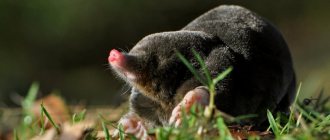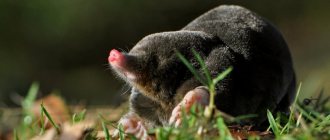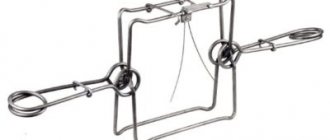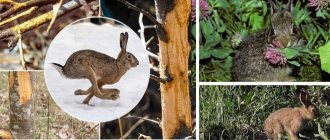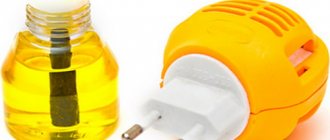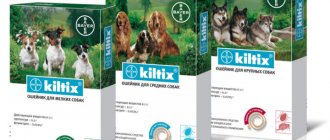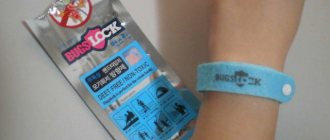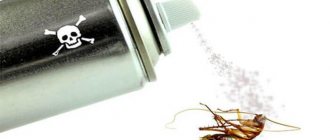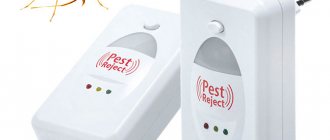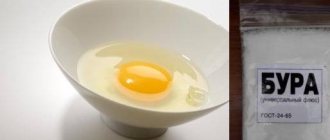When hunting for various fur-bearing animals, a variety of traps are used that do not damage the valuable fur of the animal, for example: a noose, a mouth, a scoop and others. However, such traps are still very rare at present; modern hunters use traps much more often, since they have high versatility and are more convenient to use. Most traps are manufactured in factories on assembly lines and are most often assembled from steel parts. All traps vary in size and design, which allows you to catch a wide variety of animal species. But even taking into account their diversity, the animal will still be hunted either for its limb or for its body. Traps are divided into several groups, depending on their design, installation location and can be trace, wood and pressure.
Track and arc traps
This type of trap has a large number of varieties, but there is always a distinctive feature - 2 arcs connected to the center of the trap. Which is why their other name is arc traps. Traps can be of two types - frame and plate. Frame traps are designed for large and cautious animals. They have high resistance, which is why an animal, even a large one, will not be able to escape. And plate traps can be with a cross and a flat spring or without it. Those traps that have a cross differ in size from 0 to 3, depending on the target animal.
In Russia, a ban has been introduced on the use of standard leg-grabbing retention traps with steel arches for catching wolves, raccoon dogs, raccoons, lynx, badgers, pine martens, sable, ermine, otters, beavers, muskrats
In addition, traps can be without a cross, in which case there will only be a lever with a plate at the base and two arcs for catching prey. Traps with a cross have the problem that side parts often get caught in the grass, which complicates its installation and operation, so experienced hunters try to use traps without a cross. This type of device is often used to catch muskrats, but other animals of similar dimensions can also be caught. Without a crosspiece, a trap can only be of 1 size, so it is no longer suitable for larger animals. Despite all the differences between trail traps, their essence is simple: installation on a path familiar to the animal along which it has moved more than once, which is why the animal will be less vigilant, and the smell of the trap can be masked by already familiar smells for potential game.
From a colored pot
Catching rodents can be done in another simple way. A large flower pot is turned upside down and a ruler or coin is placed edgewise on one side under its edge. At the other end of the substrate, a treat is placed for the pest. The animal clings to the placed ruler, loses its balance, and the animal falls into a trap.
When choosing this device, it is necessary to take into account that an industrial rat trap is considered more effective than a homemade device.
Ultrasonic repellers are among the most effective means of fighting rats. These devices produce sound signals that repel rodents. They are harmless to humans and pets. Such devices do not affect the operation of household electrical appliances.
Wood traps
Wood traps are an improved version of dies, traps that were made entirely of wood. They are good for catching squirrels or other similar small animals. Such traps are often used by experienced fishermen in the taiga. For example, we can consider CD 1, which is a pressure trap. It has only one plate, but it is with it that the neck of the beast is held in place. The center of the device has a spike, which is best driven into the tree as firmly as possible so that the animal cannot escape from the trap. Such a trap must be installed with an arc downwards and the trap must be camouflaged from above, with the same grass, etc., and bait must be placed on the hook. It is necessary to understand that the animal, when taking the bait, must be in the arc’s affected area. This type of self-catcher is very convenient due to its small size, great lightness and simple design, so moving and repairing it is as easy as shelling pears. Another advantage of a trap is safety for humans, since the likelihood of falling into such a trap due to its installation location and size is extremely low.
Penetration methods
Garbage dumps are considered the favorite habitat of wild rats, where they find food. When it gets cold, rodents move into basements. They enter homes through ventilation and sewerage. According to reviews, they enter apartments located on the 1st floor through doors and windows.
Since rats are prolific, a well-maintained home will be a breeding ground for rodents. And this happens in a short time. Therefore, if there are traces of pests, you should begin to combat them. An overview of effective traps for rats and mice is presented below.
You can either buy rodent control products or make your own. Rat traps are a well-known device. The products differ in design, but there is a common feature - the presence of a bait that is located inside the device. The animal wants to receive it, so it touches a certain part of the mechanism. As a result, the design works, injuring the pest.
Passing traps
So-called humane traps. They are made of wire and do not have sharp corners, which allows them to avoid damaging the animal’s valuable fur. Therefore, it is often taken for catching sable, mink, marten, etc. Such traps can be installed near holes, on trees, in swamps, in snow, in water and on ice. Moreover, they come in different types. Some can catch the animal by the limb, some by the neck or head, and some by the body as a whole. Mole traps or mink traps are special; they have wires instead of arcs and a center. They are placed near burrows and underground passages of animals, are easy to use and come in different sizes. They can also be used for large animals, but due to the narrow specialization this is very difficult, but hunters can still use them as well.
All of the above types of traps are not all that factories can offer and experienced hunters can try. Most traps vary in their target animals. There are traps for catching squirrels, muskrats, wolves, bears, etc. To catch the desired animal, you need to know how to hunt it, its trails and choose the most suitable trap for capturing it.
Previous post Hunting for wood grouse in larches
Next entry Top best shotguns under 70,000 rubles
Harm
Mice and rats eat everything that is in kitchens, warehouses, pantries, cellars, sheds, barns and other places where there is something edible. They can also damage clothes, shoes, and books.
Rodents leave excrement, urine, and saliva in homes. They are considered carriers of over 70 infectious diseases. The ominous medieval plague epidemic that wiped out the population of half of Europe was brought about by rats.
Best lures
As you know, the best bait is hard cheese. Moreover, it is suitable for both mice and rats. This product has a strong specific smell that attracts animals from afar. Rodents like the taste of cheese, it has a dense consistency, so it is well fixed in traps and does not spoil for a long time.
Used as bait:
- salo;
- fish;
- meat;
- sausage;
- flour;
- beer;
- porridge;
- bread;
- bakery;
- cottage cheese;
- smoked meats
Hunting season
It is impossible to hunt a badger all year round. It has one specific feature - a fairly long hibernation. That is why the hunting season for it is quite limited.
As a rule, it begins in late September or early October, when the animal has already gained enough subcutaneous fat - which is one of the main reasons why badger hunting is so widespread. It ends with the onset of the first cold weather, when the animal goes into hibernation.
Installation Rules
How to ensure that a marten caught in a trap goes only to the hunter, and not to any predators or rodents? To do this, traps must be placed on artificially created or natural elevations. Only in this case will the caught animal hang in the air and other animals will not be able to reach it.
How to set traps for martens so that these conditions are met? The optimal height of the device above the ground should be one to two meters. To prevent the trap from being covered with snow, fir branches or other available natural materials are placed above it.
Fishing tactics
Hunting for marten with traps begins after the location of future actions has been determined, the territory has been surveyed and the animal has been baited. If you enter the area where fishing will take place after snow has fallen, then the ability to read tracks will come in handy. Remember that if there are no old trees with hollows in this area, then the predator can rest in the tangles of fallen trunks. You can look for marten tracks on the banks of streams or rivers. In these places the predator prefers to hunt. Particular attention should be paid to already established trails. There is a high chance that the animal will pass through them again.
After discovering the territory where the marten lives, you need to figure out what to lure it to. Animal entrails, as well as rodent or bird meat, may be suitable for this. It is recommended to keep the bait warm for several days. In this case, the smell will be stronger. Bird feathers are good for attracting animals. It is either added to the bait or scattered nearby.
Precautionary measures
A cornered animal can be dangerous. A rat caught in a trap feels frightened, so when removed from a mousetrap, it can dig its incisors into the throat, face or arm. It’s not just the wounds themselves that are dangerous, but the infection that can penetrate a person’s blood.
Rats can jump up to 2 meters in height. If you use homemade or purchased mousetraps, you must protect them from access by children and pets. It is important to use these devices correctly.
Thus, various devices are used to get rid of rats and mice at home. Each of them has its own application characteristics and effectiveness.
Badgers: description, habitats, habits
The badger is a fairly strong animal. It is a member of the mustelid family, but at the same time it has significant differences from other similar animals.
The badger behaves rather unconventionally for members of its family. His habits are similar to those of a bear. With the arrival of cold weather, it immediately falls into hibernation.
Badgers dig most of their food from the ground. They do not hesitate to eat carrion. Therefore, there is a high probability of infecting their body with parasites. Before the start of winter, the animal is well prepared for hibernation. He begins to eat large amounts of grass and gives up his meat diet. Thanks to this, the animal removes parasites from its body. A person who knows the rules of badger hunting is familiar with this feature.
The badger lives in a hole. He digs it out with his big claws. The animal is awake at night and sleeps in the house during the day.
Badgers build burrows in hilly areas where there is no excess moisture. Large offspring can live in one dwelling. If a badger leaves his hole, then other animals occupy it.
Animals that have inhabited a large territory dig additional holes as a place to rest. They spend 1-2 days in them, after which they return to their main home. Burrows well inhabited by predators can have many levels and look like intricate labyrinths, the depth of which reaches 5 m.
Badgers prefer dry and sunny weather. If a predator needs to crawl out of a hole after rain, it will avoid mud and puddles. The animal prefers to wait out the rains in its burrow.
Adding a badger
If you go hunting for a badger with walk-through traps, then you should not have problems with the catch. These devices hardly injure the animal, so the trophy value of the prey is almost not lost.
Hunting a badger with traps and snares on the surface does not imply much difficulty in collecting. If the animal continues to move actively, it is recommended to shoot it in the head in order to save the animal from suffering. If the loops get tangled, it is best to cut them with a knife, so as not to reduce the trophy value of the catch while unraveling the knots.
